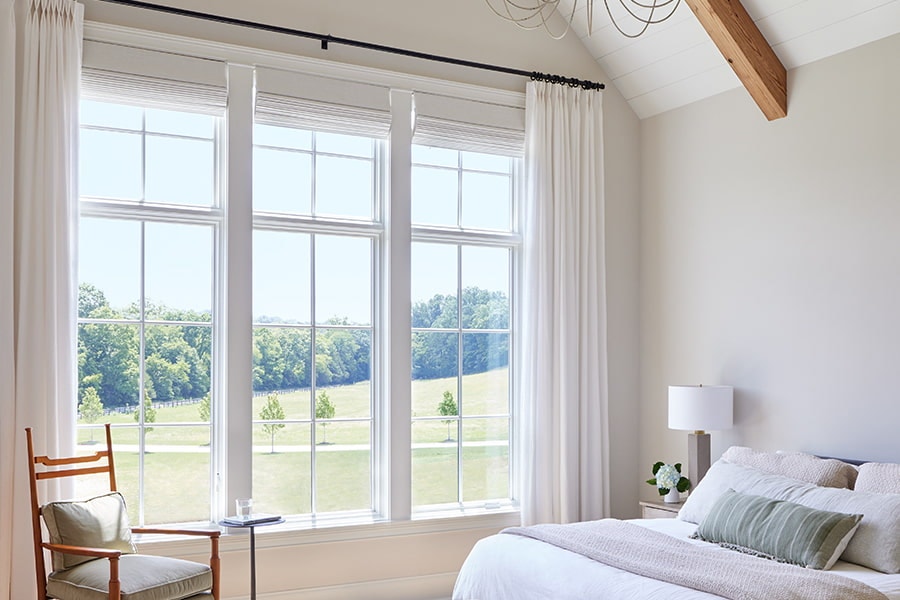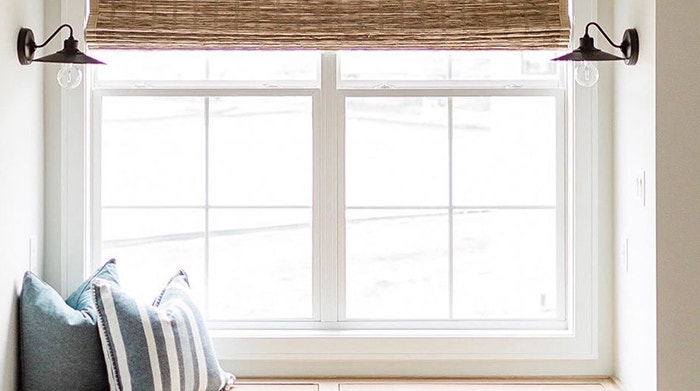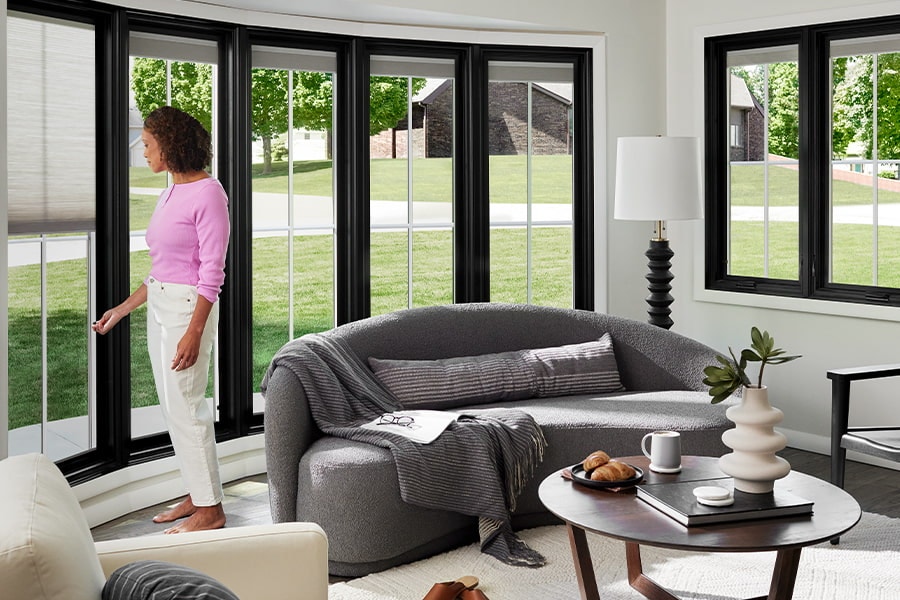How to Choose the Best Window Treatments for Your Windows
Find out which styles of window treatments go best with different types of windows.

When it comes to selecting a window treatment that suits your room and style, there are plenty of options out there. Drapery panels, between-the-glass blinds, Roman shades and more — select the right window treatment that works well with not just your style, but also the types of windows in your home? Because of the shape, size and function of different types of windows, some window treatment styles may be better suited than others.
Affordable Custom Window Treatments
We sat down with seamstress and business owner Melissa Laymon to learn which styles of window treatments go best with different types of windows. While many undergrads were taking it easy, Melissa Laymon started sewing her way to her own window treatment business. She only had $30 to her name, but her passion for interior design motivated her to create window treatment styles from whatever material she could find.
A few years later, Laymon found herself in a predicament. As a stay-at-home mom with a working husband, she needed to find a way to help support their growing family that would also allow her to stay at home. One evening, visiting relatives commented on a Roman shade Melissa had made. As the relatives complimented her on the shade, they mentioned that they had priced some shades at a home improvement store, and the cost was unbelievable. After recognizing the need for affordable custom window treatments, Laymon went on to launch her own custom window treatment business. She lets clients pick a fabric that matches their décor and personal taste for a truly custom product.
Window treatments allow homeowners to truly personalize a space to their unique style. When deciding which are best for your home, make sure to identify your goals for light and privacy and consider the direction that the window opens.

Casement and Awning Window Treatments
In the case of awning and casement windows, it is best to stick with a window treatment that can be hung outside the frame, so you don’t obstruct access to the window. While a valance or curtain panels would be a good option for these types of windows, a Roman shade that mounts to the wall can also work. This gives you more control over the amount of the window that gets covered. A Roman shade can be raised and lowered to a desired height. With an outside-mount Roman shade, you can mount it as high above the window as you want and be able to clear the window entirely for access and opening and closing.

Window Treatments for Single- and Double-Hung Windows
A lovely way to accent single- and double-hung windows is to add curtains mounted between two pieces of trim. Curtains hung high and wide on the wall will make the windows feel larger and make a more impactful presence in the room.
If the depth of your wall is deep enough, inside-mount Roman shades or blinds work well for these types of windows. Before you install inside mount window treatments, check your window manufacturer’s warranty. If you mount window treatments and drill into the window or door, you may void the product’s warranty. If you have a double-hung window that can also be opened from the top, you may want to consider top down bottom up shades, or those that can be lowered from the top in addition to being raised from the bottom. Top down bottom up shades will allow you the privacy you desire while efficiently venting a room.
Window Treatments for Sliding Windows
Sliding windows should have outside-mount shades, curtains or valances and be hung at least four to six inches above the frame. Anything mounted inside the frame will obstruct the function of the window. If an inside-mount shade is desired, there needs to be about four inches of wall depth.
The recommended width depends on the style of treatments. An extra four inches of width would suffice for Roman shades. For curtains with lots of fullness, however, you want to extend the rod up to eight or ten inches on each side of the window so when they are open, they don’t obstruct the view or light coming in through the window. These mounting recommendations will ensure maximum light and privacy coverage when your treatments are drawn. If the treatments are just for decorative purposes and not for privacy or light blocking, a valance mounted above the frame could also be a great option.

Window Treatments for Bay and Bow Windows
Bow windows look best with curtain panels or valances on a curved rod and between-the-glass window treatments. Because Roman shades are mounted to a 2-by-1 block that cannot be curved, they are not an ideal style for bow windows. If you are looking for a modern take, blinds or shades between-the-glass offer the balance of light and privacy that homeowners desire without cluttering interior décor.
Bay windows are best with Roman shades. Curtains can be used here as well, but the amount of space in between each window would be important in deciding the width of your curtains. If the windows are close together, consider using two panels to would cover the width of all the windows. If there is space in between the windows, it is possible to do several panels with one on each end of the bank of windows, then smaller half panels in between each window. Between-the-glass blinds and shades are another popular option because they modernize the window and don’t require cleaning.
Arched Window Coverings and Treatments
With a unique shape, it’s easy to see why statement-making arched windows can pose a challenge to cover with window treatments. Curtains can be hung above the arch, completely covering the window when shut and blocking out the light. If the arched window is created using a combination of window types, the curtains could be hung between the lower window, typically a casement or hung window, and the half circle arched window above. This allows you to maintain privacy without blocking all natural light.
Shades, roman or cellular, are another popular option for arched windows because they can be custom fit to the arch. These shades can cover all glass to help you balance the right level of light and privacy in the room.

Window Treatments for Custom and Floor-to-Ceiling Windows
Specialty windows, such as eyebrow or gothic, and window walls can be tricky to dress. If you want to enhance the unique shape of the window, decorative pegs can be placed above the frame of the arch where the curtains can hang. The curtains would not slide from side to side as they would on a rod and would require a tie back. This design could accent and celebrate the unique shape of the window.
Window walls or floor-to-ceiling windows, due to their immense size, make them difficult and expensive to style. Most floor-to-ceiling windows will require custom window treatments to ensure the large amounts of glass are covered and perhaps, to create a seamless look with patio door window treatments. Motorized blinds or shades work well for windows high up on the wall or mirroring a roofline. This gives you control over the amount of light and privacy. Curtains are another option. When hung close to or recessed into the ceiling make a statement as big as your windows. This luscious look softens the modern lines of a window wall while giving you control through material choice of light-filtering or blackout curtains.
Choosing the right window treatments for your home depends on several factors including your window type, room and your personal style. Before you choose, do your research to find the best option for your home.


